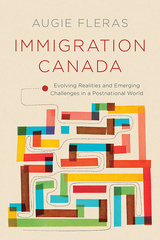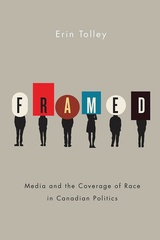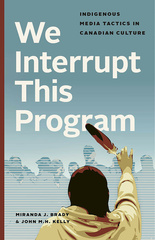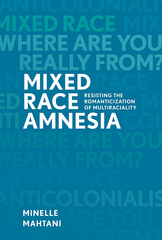
As Canadians, we take pride in our nation’s official commitment to fostering diversity. A close look at our media, however, reveals that while they often pay lip service to diversity promotion, they actually play a pivotal role in producing and reproducing the values, structures, and priorities of a predominantly “straight,” white, male society. The Media Gaze shines a light on the myriad ways that mainstream media -- newscasters, advertisers, filmmakers, and television programmers -- work to appear objective, even as they actively ignore or misrepresent the experiences of those who fall outside their frame of reference.
Drawing on a variety of thought-provoking case studies, Fleras explores the implications of the media’s framing of women, young men, the elderly, racialized and new Canadians, Aboriginal peoples, the working class and poor, gays and lesbians, and religious minorities. A timely and critically important audit of representational bias in Canada’s media industry, The Media Gaze also presents readers with alternative ways of creating, understanding, and analyzing mainstream media.
A long-overdue exploration of Canadian media bias that will be of interest to students in communications, sociology, gender, and critical race studies.
The Media Gaze makes a major contribution to the growing field of media analysis of race, class, and gendered representations. It will become a prime source for students working in critical media studies, and for scholars looking for an updated analysis of the Canadian mediascape.
Written by an author in full control of his subject matter, The Media Gaze will be of great use in classes on media and cultural studies, as well as by those in the media profession. An extremely engaging, soundly researched, important book.
This is the first time that ageism, gay, lesbian, ‘working class’ masculinities, Aboriginal, and a range of other minority representations are brought together under discussions of the politics of identity and representation in Canada. The Media Gaze is an exceptionally important book, and will be used widely in sociology, communications, gender studies, and journalism courses.
Preface
Part 1: Seeing Like the Mainstream Media
1 Disassembling Media 101
2 Conceptualizing Media Gazes
Part 2: Media Acting Badly – The Politics of Media Gazes
3 Racialized Media, Mediated Racism
4 A Gendered Media: Male Media Gazes in a Feminist World
5 Media, Classed: Framing the Rich, the Poor, and the Working In-Between
6 Sexuality in the Media: The New Media Gays
7 Engaging Age(ism): Young Adults, Older Adults
Part 3: The (Mis)Representational Processes – Case Studies in Seeing Like the Media
8 Racializing Immigrants/Refugees: News Framing the Other Within
9 Advertising Beauty: What Is Dove Really Doing?
10 Reclaiming a Muscular Masculinity: Televising a Working-Class Heroic / With the assistance of Dr. Shane Dixon
11 Framing Religion: Media Blind Spot or Coverage That Blinds?
Part 4: Gazing against the Grain – Toward an Oppositional Media Gaze
12 Social Media as Oppositional Gaze
13 Unsilencing Aboriginal Voices: Toward an Indigenous Media Gaze
14 Ethnic Media: “Empowering the People”
Conclusion: Re-engaging the Media Gaze
References
Index
















